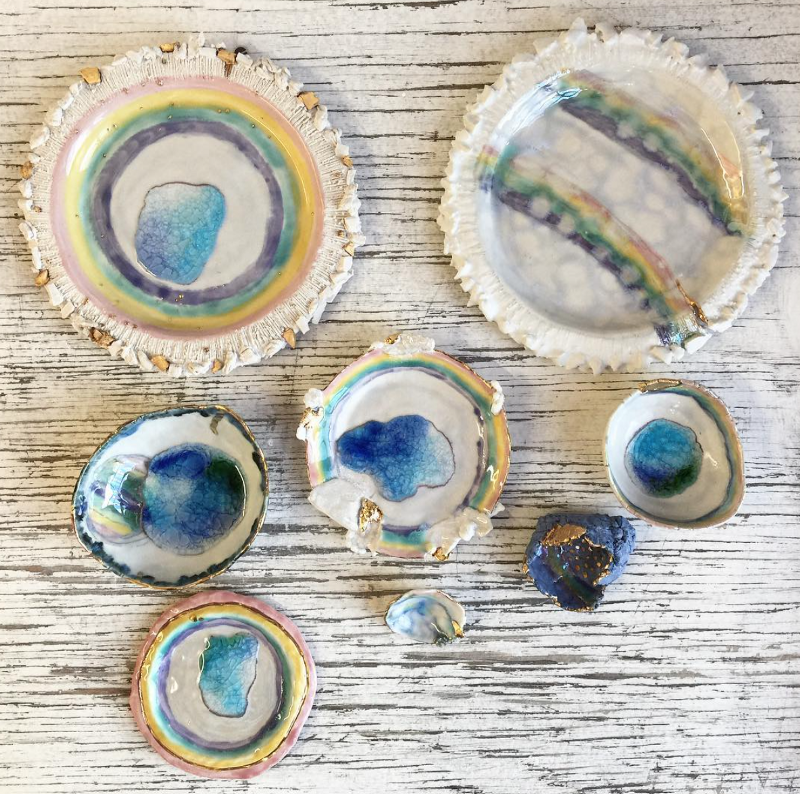
In our bodies, everything is connected. Our sense of touch can change our mood. Our sense of sight affects our perception of flavor. Our sense of smell can transport us to a fond memory. Our sense of taste can dictate what we choose to put in our bodies, and how we feel.
Today we speak with Brooklyn-based ceramic artist, Minh Singer, about how she grounds herself and connects to nature through her work.
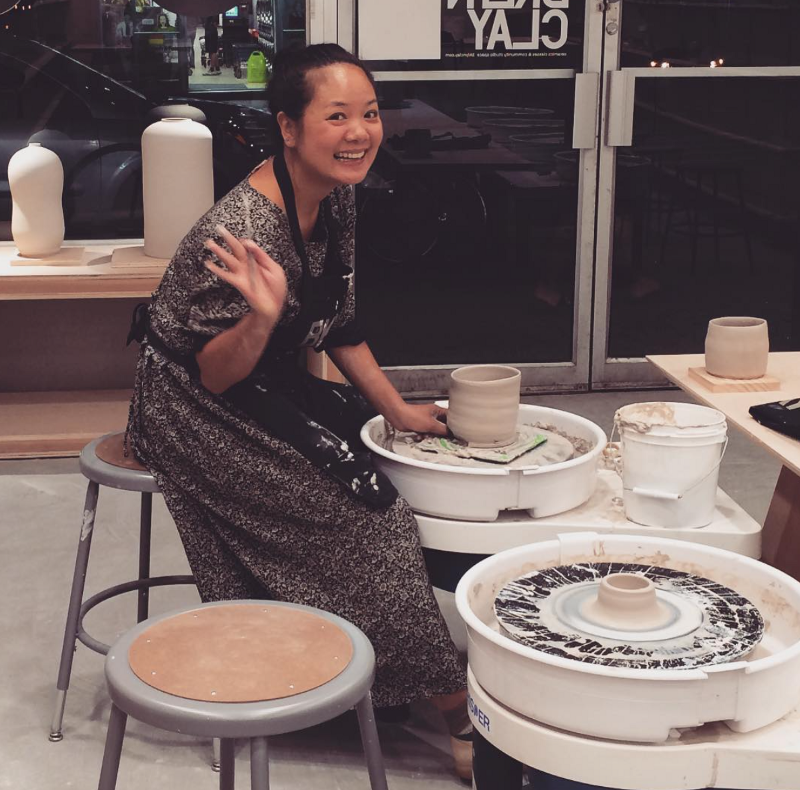
Splendid Spoon: Hi Minh! Tell us a bit about yourself.
Minh Singer: Hi! I’m based in Brooklyn and work at a communal studio called ClaySpace. I had many careers before I became a ceramic artist, including working as an art teacher and in the fashion industry. I’ve always been drawn to art, and it’s saved my life more than once.
Five years ago, when I moved back from Asia to New York, I was starving to learn something new. In Vietnam and Hong Kong there weren’t many resources for creative endeavors, and New York inspired me to start making art with my hands.
Like many people, I picked up ceramics [As in making objects with clay (or a similar material), and setting them by firing them. — Ed.] as a hobby. It was really difficult to start! Learning to throw on the wheel can be a long, arduous process. I definitely wasn’t good at it! I realized it would take long time to become technically skilled.
However, I love clay. I love the process of taking what’s basically earth and turning it into things you need. The concept is magical! I’d found another way, besides being in fashion or teaching, where art aligned with function.
Everything I made was a bit wonky. A teacher told me it was just clay, so I could ball it up and start again, but I was stubborn. I wanted this weird, awkward thing to live! I did all I could to turn every object into something beautiful. I carved it thin, almost to the point of cracking. I added texture and marked the surface. I experimented with color and glazes [Glazes are used to color, decorate, and waterproof a piece. — Ed.]. When the pieces came out the kiln, I adored them. I wasn’t trying to make them perfect, I just wanted them to make me happy.
Ceramics came into my life at the perfect time. I was working a dead-end job, dealing with a stressful family life, and essentially having an existential crisis. I used to be depressed. Clay saved me. When I was fired from my job and got shingles from my anxiety, it gave me something positive to focus on. I decided I wanted to make my mark on the world and commit to one thing in my life, so I decided it would be clay.
SS: How do you approach a new piece?
MS: Since ceramics are mostly three-dimensional objects, I consider every side. I want the user to want to touch and hold it. I want it to feel refined, so I make it light. I want people to look at it from each angle and notice the details. I want to make people slow down.
SS: Do you find that pottery connects your body and mind?
MS: I may sound esoteric, but I consider my body and mind to be a vessel that collects everything I see and know about the universe, so it can then flow through my hands. It’s a spiritual experience.
SS: Do you think that working with what is literally a piece of earth keeps you grounded?
MS: Definitely! It’s like gardening in that respect. Clay also feels therapeutic because of its malleable nature. It feels primitive, and my hands are too dirty to be distracted by my phone!
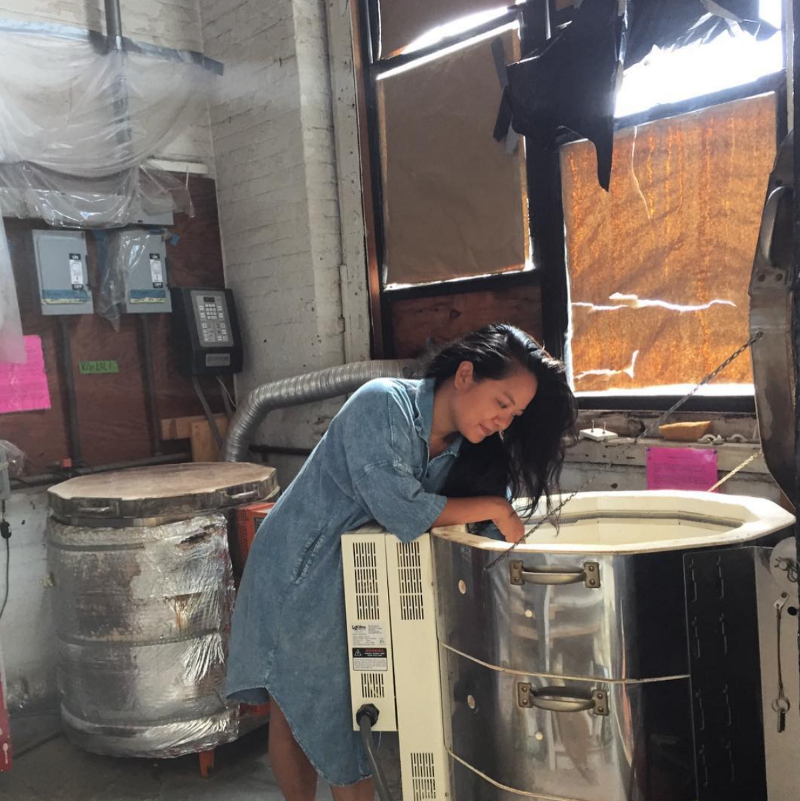
SS: So much of the ceramics process is done blind. How do you cope with this?
MS: Out of all the art I’ve done, I enjoy ceramics and printmaking the most because of the blindness from the finished product. It keeps me removed from the final outcome so I can’t judge it or myself while working on it.
I exercise my instincts, but my decisions are also based on experience. I hope for the best, and often it doesn’t come out the way I expected. I’m always learning from new methods!
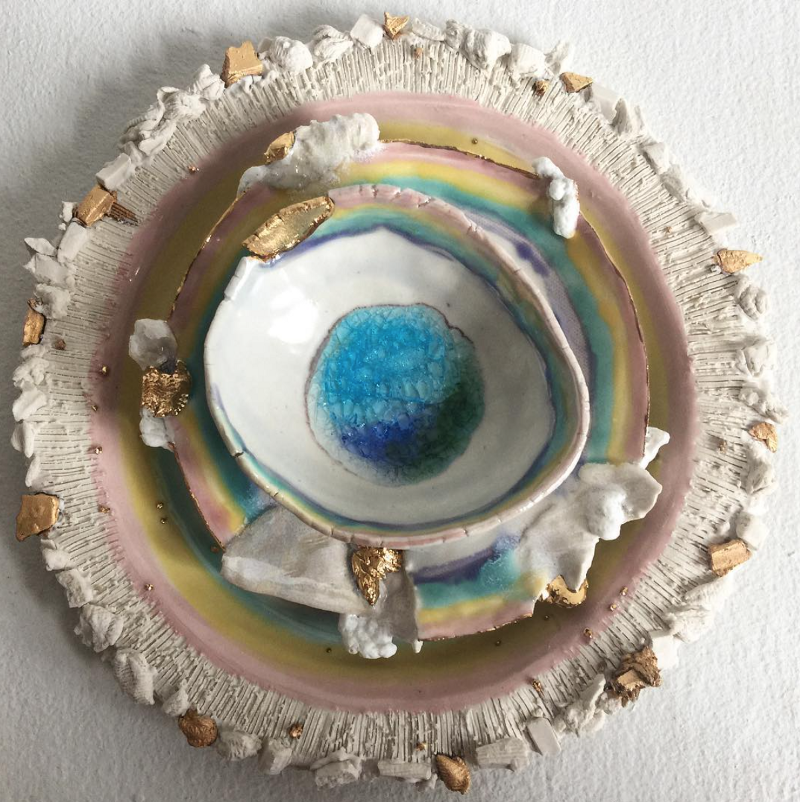
SS: Your work seems natural and mystical. Where do you draw your inspiration from?
MS: My work reflects anything that makes me stop to admire its beauty and fills my heart. Some themes from nature I use are rainbows, geodes, thermal pools, waterfalls, and nebulae — natural wonders. I’m also influenced by spiritual art, like mandalas, because of their trance-inducing quality, or spiritual work made for sacred rituals. I combine souvenirs from nature with a surreal aspect: the objects come from dreams, outer space, the sea, the center of the Earth.
SS: Was pottery always a mindful, grounding practice for you?
MS: When I first started pottery, I had stress-induced acne. I was always embarrassed and aware of it. I noticed there would be hours at a time while working with ceramics, that I didn’t think about my pimples. That was the first clue that this was something I needed.
SS: How do you combine ceramics and meditation?
MS: I have two amazing teachers — Claire Rodgers and Kathie Regan. They taught me this wonderful meditation exercise that’s influenced a lot of my work and keeps me relaxed.
I hold a ball of clay in my hands, close my eyes, scan my body, and take deep breaths until I feel centered. I feel the clay in my hands, notice the temperature and shape. Then I start to make a pinch pot with my eyes closed. It’s like giving the ball of clay a massage, kneading all the lumps and tension out of the walls. I start most of the dishes I make in this way, imbuing the clay with peaceful energy.
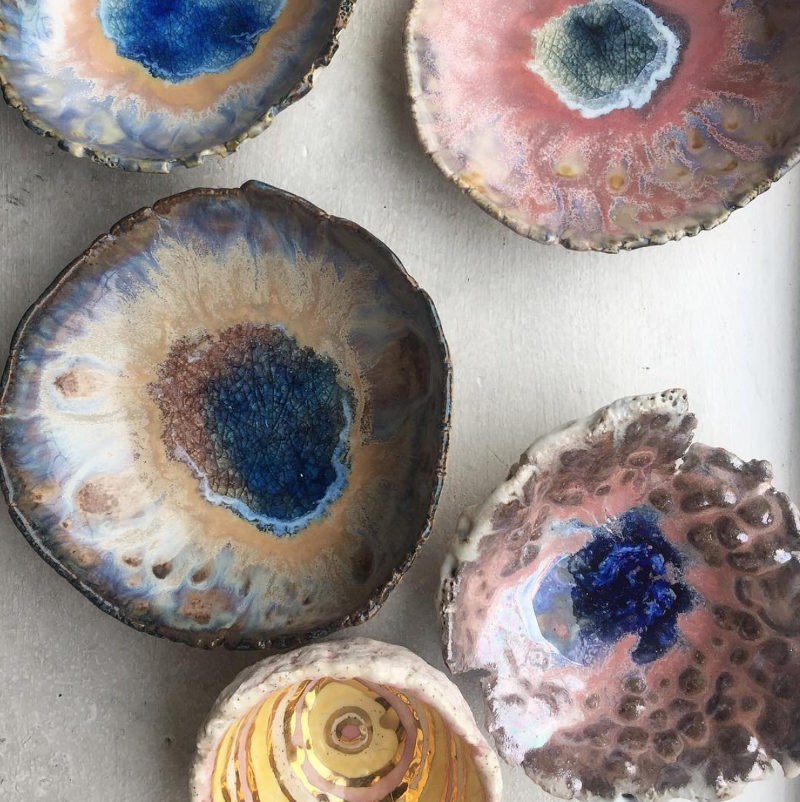
SS: By taking a piece of earth and transforming into a beautiful, yet functional, nature-inspired creation, you come full circle. Is this intentional?
MS: That’s an amazing observation! I guess I haven’t consciously thought of it before. I suppose that’s why clay as a material lends itself so perfectly to the nature-inspired objects I make: it really is nature!
SS: How else do you stay grounded when living in NYC?
MS: With plants! I have many in my house and on my fire escape. We need plants in the city. Sitting outside on my fire escape, admiring the plants and appreciating the sky, is grounding. The city can’t take the sky away from us: all we have to do is look up!
